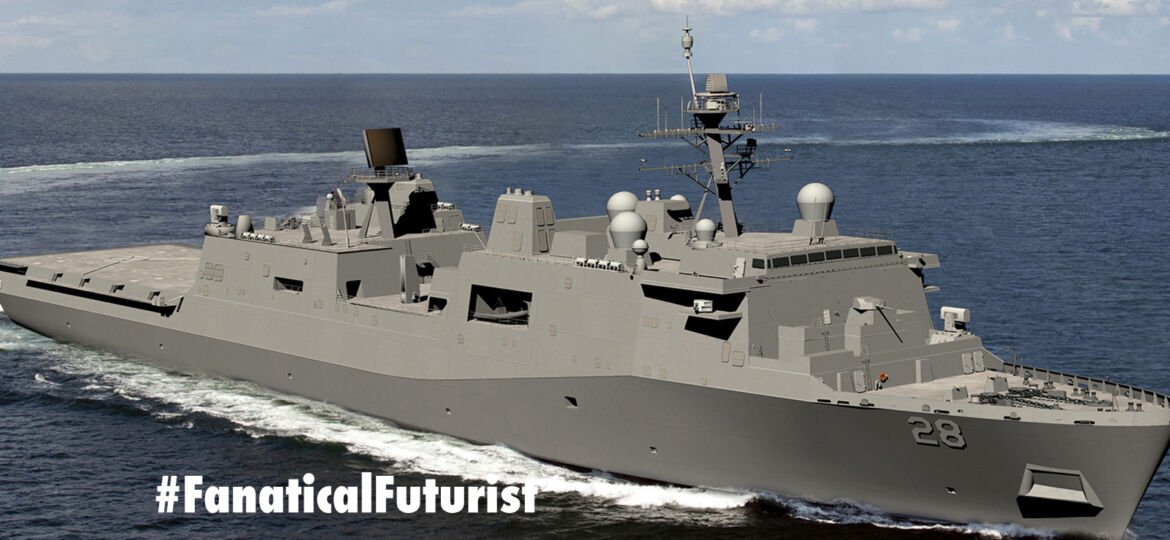
WHY THIS MATTERS IN BRIEF
Today’s ships use huge amounts of energy and fuel to move through the water because of the amount of drag on their hulls, this new coating could reduce fuel use by between 40 and 80 percent.
Shipping is one of the most polluting industries on Earth, which is just one of the reasons why we’re beginning to see the emergence of electric cargo ships, but now in order to make ships and submarines glide through the water faster, and use significantly less fuel, the US Navy’s Office of Naval Research (ONR) has announced it’s sponsoring the development of what it calls an “Omni-phobic” coating that not only repels water, but pretty much any other substance as well, including alcohol, oil and even peanut butter – some of which are obviously more abundant in the marine environment than others. Anish Tuteja, an associate professor of materials science and engineering at the University of Michigan, who’s leading the research, has created a clear, durable chemical coating for ONR that is designed to reduce hull friction, making ships more energy efficient and stealthier.
Watching a ship pass, especially under sail, on a reasonably calm day seems almost like magic. As the hull slices through the water, it looks to effortlessly skim along without the slightest resistance. But that’s far from true. Because the water is able to wet the hull, it clings to the surface, producing friction and therefore drag, massive amounts of fuel sucking drag. And if the hull is fouled with barnacles and coral, the problem becomes even worse.
The material in action
“A significant percentage of a ship’s fuel consumption, up to 80 percent at lower speeds and 40 to 50 percent at higher speeds, goes toward maintaining its speed and overcoming friction drag,” says Ki-Han Kim, a program officer in ONR’s Sea Warfare and Weapons Department. “If we could find a way to drastically reduce friction drag, vessels would consume less fuel or battery power, and enjoy a greater range of operations.”
Not only is reducing friction a matter of increasing efficiency, but of stealthiness as well. Friction and drag produce turbulence, which creates noise that can be picked up on sonar. Ideally, a smooth, frictionless hull would be a quiet hull that would allow ships and submarines to operate at higher speeds with less chance of being detected.
One way of achieving this is to use special coatings that repel water and other liquids rather than be wetted by them. Such coatings are well known, but he tricky bit is to develop a coating with a wide spectrum of “phobic behaviour,” so it will not only repel water, but other liquids like oil and fats. In addition, the coating must be practical, which means it must be durable, especially in marine environments where it often has to go for years without being re-applied.
“Researchers may take a very durable polymer matrix and a very repellent filler and mix them,” says Tuteja. “But this doesn’t necessarily yield a durable, repellent coating. Different polymers and fillers have different miscibilities, the ability of two substances to mix together. Simply combining the most durable individual constituents doesn’t yield the most durable composite coating.”
Exactly what the new omniphobic coating developed by Tuteja is hasn’t been revealed, but it was developed by her team using a computer database of known chemicals and subjecting them to complex modelling to predict how they would interact with one another and what their properties might be. The final product was an optically clear, rubber-like substance that can be sprayed on and binds tightly with many surfaces, yet is resistant to scratches, dents, and other abuse.
According to Tuteja, the coating has applications beyond painting hulls, including as a protectant for sensors, radar units, and antenna from bad weather. The compound is still being tested, but the team is confident that it will be ready for small-scale military and civilian use in the next two years.
The video above shows the omniphobic coatings being tested.
Source: ONR
















